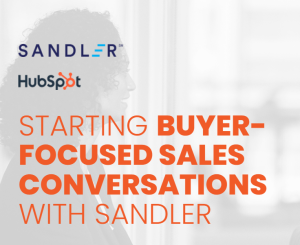
It is far easier to sell at your listed price than most salespeople realize – even during economic uncertainty. Here are three steps you can take today that will make selling without discounting second nature, no matter what else is going on in your market.
1. ENGAGE WITH ULTIMATE DECISION-MAKERS.
During economic uncertainty, it’s quite common to hear mid-level contacts say things like: “Our budgets are frozen.” Do you know who doesn’t talk like that when times are challenging? People at the top. People who are responsible for making good outcomes happen, even though times are tough. When a high achiever has the proper conversation with a leader, budgets have a way of unfreezing.
Consider that, during a downturn, many of your competitors will be slashing prices, hoping not to have to move beyond their comfort zone when expanding their network of contacts. That means they’re vulnerable. That means it’s your turn to shine . . . by reaching out to C-level people and other ultimate decision-makers. Make a case for a true partnership that addresses the most pressing problems those ultimate decision-makers are facing. Once you do that, you’ll notice that most of the time, the leaders you talk to will be willing to pay your list price. Why? Because you will make a business case that supports that list price, one that clarifies the return on investment.
The more ultimate decision-makers you talk to, the more margin – and commissions – you will hold on to! Yes, ultimate decision-makers are a little harder to reach (though not as hard as some think), but the effort is worth it. They will always tell you exactly where you stand. And they’re less likely to squeeze you on price.
2. USE THE SANDLER® NEGOTIATION MATRIX.
Discounting price should not be a concession. Period. All too often, though, it’s our first concession. That’s totally unnecessary . . . and a simple Sandler tool can empower you to raise your prices (that is, hold on to more margin and more commission) without raising your prices.
Our experience is that many salespeople “wing it” when doling out concessions during negotiation discussions. Very often, they destroy the selling organization’s margin in the process – and drive senior management to distraction. More importantly, they limit their earning potential and the organization’s potential to deliver value, making long-term business relationships harder to sustain. To address this challenge, we’ve created a simple, powerful tool that makes it easier to hold on to the list price during negotiation discussions. Meet the Negotiation Matrix, a simple, powerful tool that helps you to prepare for requests for concessions from prospective buyers – and makes “winging it” a thing of the past. Its core idea is a startlingly simple and effective one: exhaust all the possible non-cash concessions before you agree to a price concession. That’s far easier to do once you’ve filled out the two sections of the Matrix. See the example below.

As you can see, the Sandler Negotiation Matrix helps you prepare a private concession worksheet ahead of time and in writing. This document (for your and your manager’s eyes, not the buyer’s) outlines the specific concessions you are willing to give during the negotiation, starting with the non-monetary ones. The moral: You can prioritize smart concessions that don’t carry an immediate financial hit over knee-jerk price discounts that do!
3. IF YOU DO HAVE TO RAISE YOUR PRICES, ASK FOR SOME HELP.
Sometimes a price increase is unavoidable. That’s a fact of life. The question is: What happens after your organization decides that is the case? You might prefer having a root canal than scheduling a meeting to tell a client or customer that prices are increasing. That’s a natural response – but it’s also a problem.
Solution: Ask for help! Your manager can help you plan for this meeting by unearthing the relevant statistics, identifying the underlying reasons for the increase, and giving you a clear sense of the return on investment experienced by customers similar to the customer you will be meeting.
As you prepare for this important meeting with your client, remember that trying to defend or justify your price almost always backfires. A far better approach is to remind clients and customers about the size of the problem you are solving. You may also want to ask if your manager is willing to accompany you on this meeting – and perhaps even do the "heavy lifting" when the time comes to make a case for a long-term relationship with this buyer . . . even though prices are going up. The buyer will appreciate the personal attention, you will appreciate the help, and you will get fewer requests for price discounts!
Make these three simple best practices part of your sales vocabulary today. Use them. Share them. Evangelize them. Last but not least, take time to celebrate each time one of them helps you hold on to your list price —which is going to be often!
FREE REPORT |
|
Learn how to hook the attention of your buyers with what matters most, beginning a sales conversation that leads to more viable opportunities. |


